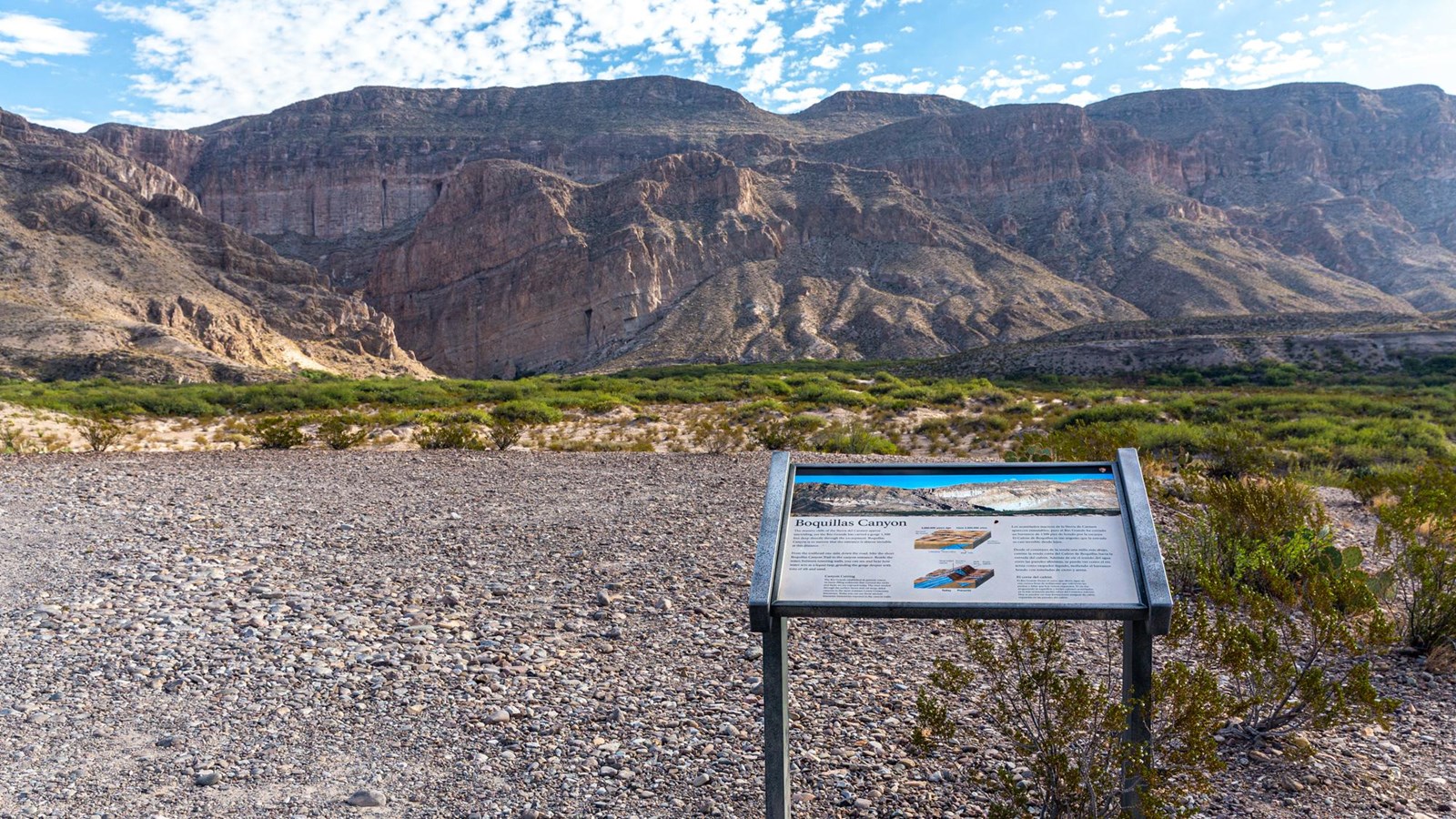Last updated: May 29, 2025
Place
Boquillas Canyon Exhibit

NPS/CA Hoyt
Quick Facts
Location:
Big Bend National Park
Amenities
3 listed
Historical/Interpretive Information/Exhibits, Parking - Auto, Scenic View/Photo Spot
Boquillas Canyon is one of three massive canyons cut by the Rio Grande within Big Bend National Park. This exhibit discusses how the Rio Grande carved the canyon.
The text on the exhibit reads:
"The massive cliffs of the Sierra del Carmen appear unyielding, yet the Rio Grande has carved a gorge 1,300 feet deep directly through the escarpment. Boquillas Canyon is so narrow that the entrance is almost invisible at this distance. From the trailhead one mile down the road, hike the short Boquillas Canyon Trail to the canyon entrance. Beside the water, between towering walls, you can see and hear how water acts as a liquid rasp, grinding the gorge deeper with tons of silt and sand.
The Rio Grande established its present course on basin-filled sediments that covered the rocks and faults we see exposed today. The river eroded through the surface layers and cut steep-sided canyons in the more resistant Lower Cretaceous limestones. Today you can see those ancient limestone formations exposed in the canyon walls."
The text on the exhibit reads:
"The massive cliffs of the Sierra del Carmen appear unyielding, yet the Rio Grande has carved a gorge 1,300 feet deep directly through the escarpment. Boquillas Canyon is so narrow that the entrance is almost invisible at this distance. From the trailhead one mile down the road, hike the short Boquillas Canyon Trail to the canyon entrance. Beside the water, between towering walls, you can see and hear how water acts as a liquid rasp, grinding the gorge deeper with tons of silt and sand.
The Rio Grande established its present course on basin-filled sediments that covered the rocks and faults we see exposed today. The river eroded through the surface layers and cut steep-sided canyons in the more resistant Lower Cretaceous limestones. Today you can see those ancient limestone formations exposed in the canyon walls."
